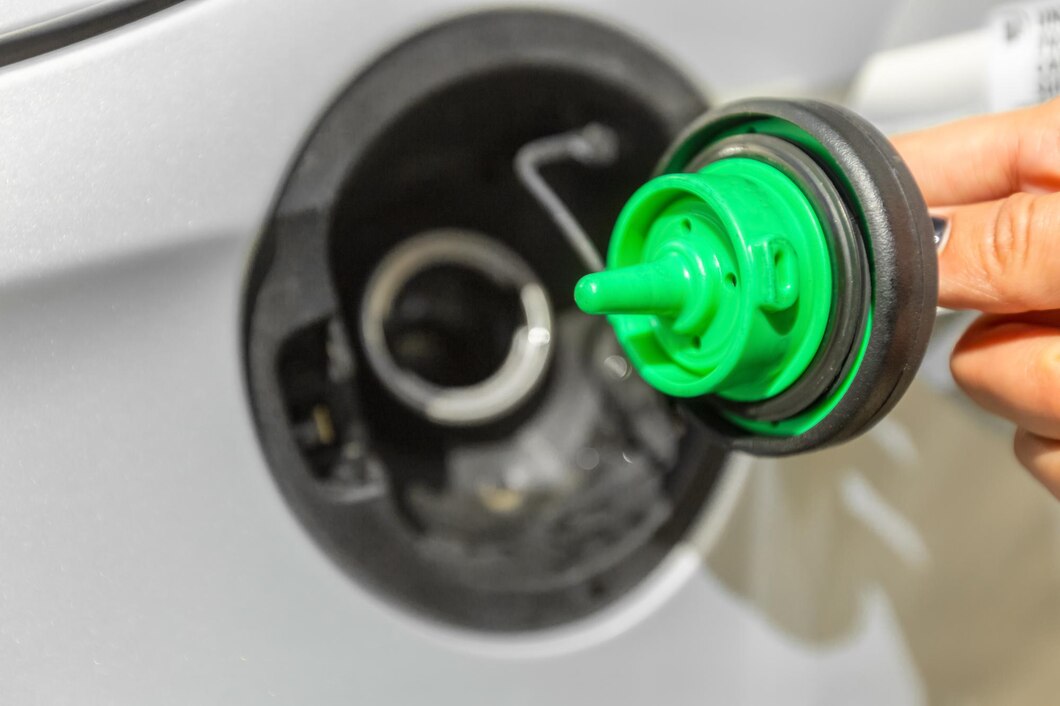Your car’s fuel cap might seem like a small component, but it plays a crucial role in maintaining the integrity of your vehicle’s fuel system. Here are some early signs that your car’s fuel cap is not sealing properly, and why addressing this issue promptly is important:
1. Check Engine Light (CEL) Illuminates:
- One of the most common indicators of a loose or faulty fuel cap is the illumination of the Check Engine Light on your dashboard. The onboard diagnostics system detects a leak in the evaporative emissions system, often caused by an improperly sealed fuel cap.
2. Smell of Fuel Odor Around the Vehicle:
- If you notice a strong smell of gasoline around your car, especially near the fuel filler area, it could indicate that fuel vapor is escaping due to a loose or damaged fuel cap seal. This is not only a potential hazard but also leads to fuel wastage.
3. Drop in Fuel Efficiency:
- An improperly sealed fuel cap can lead to the evaporation of fuel vapors from the tank. This not only pollutes the environment but also reduces your vehicle’s fuel efficiency over time. If you find yourself refueling more frequently without any obvious reason, it’s worth checking the fuel cap seal.
4. Difficulty Starting the Engine:
- In some cases, a malfunctioning fuel cap can affect the proper pressure within the fuel system, potentially causing difficulties in starting your engine. This happens because the system may not be able to maintain the correct fuel-to-air ratio needed for ignition.
5. Visible Damage or Wear on the Fuel Cap:
- Inspect the fuel cap itself for any signs of visible damage, such as cracks, breaks, or worn-out seals. Physical damage can compromise the cap’s ability to create a tight seal, leading to leaks and other issues.
Why It Matters:
The fuel cap is not just a cover for your fuel tank; it plays a critical role in several aspects of your vehicle’s performance and environmental impact:
- Emissions Control: A properly sealed fuel cap prevents the escape of harmful fuel vapors into the atmosphere, helping your vehicle comply with environmental regulations.
- Fuel Efficiency: Ensuring a tight seal on the fuel cap prevents fuel evaporation, thus preserving your fuel and maintaining optimal fuel efficiency.
- Engine Performance: Maintaining proper pressure in the fuel system ensures smooth engine operation and reliable starting, especially in modern vehicles with sensitive fuel management systems.
Fixing the Issue:
If you suspect that your car’s fuel cap is not sealing properly, here are steps you can take to address the problem:
- Inspect the Cap: Check for any visible signs of damage or wear on the fuel cap itself. Clean the sealing surface and ensure there is no debris or dirt that could interfere with a proper seal.
- Replace the Fuel Cap: If the cap shows signs of damage or wear, replace it with a new one that is compatible with your vehicle’s make and model. Make sure to purchase a cap that meets the manufacturer’s specifications for sealing and emissions control.
- Check the Seal: Ensure that the rubber seal on the fuel cap is intact and pliable. A hardened or cracked seal will not provide an effective barrier against fuel vapor leakage.
- Tighten Properly: When refueling, always tighten the fuel cap securely until you hear a clicking sound. This indicates that the cap is properly sealed.
In conclusion, while a malfunctioning fuel cap might not seem like a major issue, it can have significant implications for your vehicle’s performance, fuel efficiency, and environmental impact. Regular inspection and maintenance of the fuel cap will help ensure that your car operates efficiently and complies with emissions standards, ultimately saving you money and reducing your carbon footprint. Addressing any signs of a faulty fuel cap promptly can prevent more costly repairs and keep your vehicle running smoothly.











